What constitutes an “Old Vine”?
What constitutes an “Old Vine”?
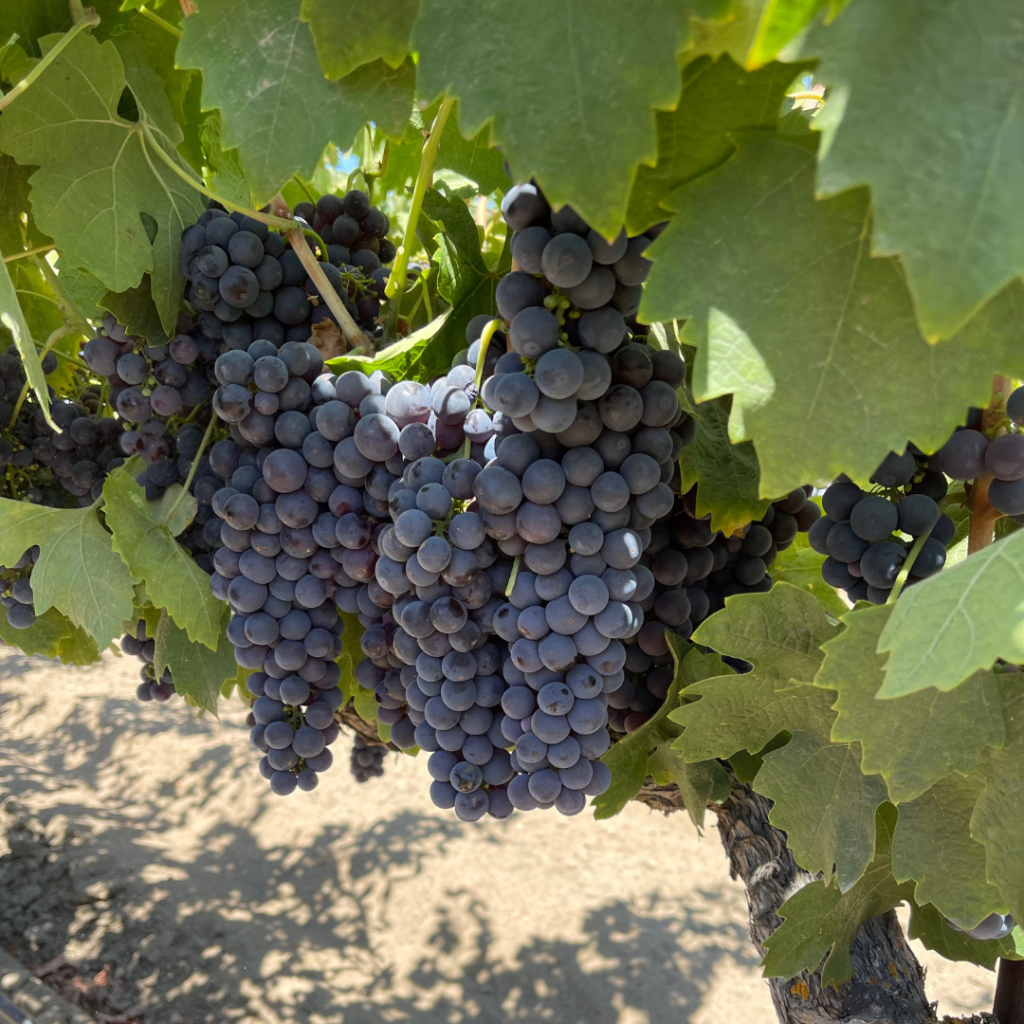
According to google, for a wine grape to be considered “old vine” it needs to be over 20 years old. After about 20-30 years, depending on how the vine has been taken care of, the vine usually will start to produce smaller clusters. These smaller berries are more concentrated and in turn, produce more complex fruit. This is the reason why winemakers go crazy over old vine grapes. The wine that you can make is unlike any other. Although there can be some challenges in the yield department, the wines created from old vines are luscious, complex, and pack a punch.
Fun fact – did you know grape vines can grow for up to 130+ years?!!
A big reason why you see so many Old Vine Zinfandel and Old Vine Primitivo in California is that those were the most widely planted grapes in the US originally. There are vineyards in California with Zinfandel vines that are over 125 years old! One of them is Costamagna’s Vineyards Old Vine Primitivo!!
There is something very special about walking through this Primitivo vineyard for fifth-generation farmer Berton Costamagna. “Since 1902 my family has been here in Lodi farming these wine grapes”, says Berton. “To think that my Nono (Great, Great, Great Grandfather) had the foresight to start a farming adventure back then, by planting his first vineyard of Primitivo here, and to see where it is now, is so inspiring to me.” With its sandy loams and ideal climate, farmers back then quickly saw the potential for growing wine grapes in Lodi, in the heart of California. Fast forward 120 years, and Lodi California has come to be known as the Zinfandel Capital of the World and is now one of the top-producing AVA’s in the world. The Costamagna family has continued farming their family’s clone of Primitivo for all these years for wineries and home winemakers to enjoy with their families. “These grapes make for a great wine, but what is truly special, is these grapes connect us to the hard work, traditions, and memories of my family before me. My hope is that folks can make as many memories drinking the wine from these grapes as our family has made farming them.” 🍇🍷 We can’t wait to receive these grapes from the Costamagna Family!
Interested in making Old Vine Primitivo? check in with us via sales@juicegrape.com or call us at 877-812-1137, follow us on Facebook, Instagram, and Youtube, or check out the Harvest Tracker and Winemaker Blog on our website- juicegrape.com.
Special Primitivo coming from fifth generation farmer Berton Costamagna

Special Primitivo coming from fifth generation farmer Berton Costamagna
There is something very special about walking through this Primitivo vineyard for fifth generation farmer Berton Costamagna. “Since 1902 my family has been here in Lodi farming these wine grapes”, says Berton. “To think that my Nono (Great, Great, Great Grandfather) had the foresight to start a farming adventure back then, by planting his first vineyard of Primitivo here, and to see where it is now, is so inspiring to me.” With its sandy loams, and ideal climate, farmers back then quickly saw the potential for growing wine grapes in Lodi, in the heart of California. Fast forward 120 years, and Lodi California has come to be known as the Zinfandel Capital of the World, and is now one of the top producing AVA’s in the world. The Costamagna family has continued farming their family’s clone of Primitivo for all these years for wineries and home winemakers to enjoy with their families. “These grapes make for a great wine, but what is truly special, is these grapes connect us to the hard work, traditions, and memories of my family before me. My hope is that folks can make as many memories drinking the wine from these grapes as our family has made farming them.” 🍇🍷 We can’t wait to receive these grapes from the Costamagna Family!
How to Order
We are an old school company. Give us a call at 877-812-1137 or email us at sales@juicegrape.com to get the ball rolling on your pre-order. Don’t forget, we can create custom fermentation templates for you if you would like!
If you aren’t local to New England and need your product shipped, please email sales@juicegrape.com for a freight quote. We will be shipping out of our Bronx, NY location – D’Arrigo. If you live in the Metro NY area and are interested in a freight quote please reach out to sales@juicegrape.com
Unfortunately, we cannot ship fresh juice. We can ship our sterile juices (Original All Juice (juicegrape.com)), they ship year-round without refrigeration. This is the best option for home winemakers who cannot pick up the fresh product from MWG’s facilities.
If you have a large fresh product order (2,000lbs and up), please contact sales@juicegrape.com for a freight quote.
For more information regarding the Fall Harvest please feel free to contact us at sales@juicegrape.com or give us a call at 877-812-1137. We are looking forward to helping you with your next great wine!
Sincerely,
Christina Musto
Musto Wine Grape Co.
Wine Grape Spotlight: Mettler Ranch Zinfandel
Wine Grape Spotlight: Mettler Ranch Zinfandel

When making Mettler Ranch Zinfandel you can create a wine with earthy and smoky aromas. Along with a complex medley of flavors including plum, blackberry jam, tobacco, anise, and sweet oak. The sturdy but softly integrated tannins yield to subtle oak notes (if you make an oak addition) as the wine lingers on the palate. These grapes create a wine full of Zinfandel personality! Winemaker Adam Mettler suggests some light French oak to add a little extra complexity.
If you can hold off drinking your wine right away and lay it down for 1-2 years it will only gain more of that zesty, delicious personality. If you’re interested in trying out a different Zin this year, Mettler Ranch is a great choice. Email sales@juicegrape.com or call the office at 877-812-1137 for more details on how to reserve these grapes.
The Mettler Family has been farming wine grapes since the 1800’s. Recognized in the Agricultural Hall of Fame, they are 8th generation grape growers in Lodi, CA. With over 800 acres farmed in Lodi county, some vineyards being upwards of 100 years old, these vines are meticulously managed and maintained. All of their vineyards are LODI RULES certified and some are Certified Organic through the CCOF (California Certified Organic Farmers).
Lodi has a classic Mediterranean climate with warm, dry summers and cool, moist winters. The dry warm summer days allow Lodi grapes to develop full, ripe fruit flavors while the distinctive breezes maintain the natural acidity for structure and complexity in finished wines.
The Mettler Zinfandel is sourced from their vineyards by the Mokelumne River, referred to as “Old Lodi.” The soil is sandy and this sub appellation is known for being an epicenter for Old Vine Zinfandel. The vines are 50 years old, sustainably farmed, and certified through LODI RULES.
Making Mettler Ranch Zinfandel (5-6 gallons):

Ingredients:
- 2-3 cases (36lbs) of Mettler Ranch Zinfandel grapes
- 1.6 gms of Potassium Metabisulfite
- 3mL of Color Pro
- 1 – 6gal package of Go-Ferm
- 1 – 6gal package of chosen yeast (see yeast suggestions below)
- 1 – 6gal package of Fermaid K
- 1 – 6gal package of Fermaid-O
- 1 – 6gal package of Malolactic Bacteria
- Optional Additives:
- 1 – 6gal package of Tannin FT Rouge
- 1 – 6gal package of Opti-Red
- 1 – 6gal package of Booster Rouge
- .9oz of French Oak Dust
Yeast Suggestions:
Equipment:
- 1- 6 gallon carboy
- 1 – 5 gallon carboy
- 1- 50LTR fermentation pail w/lid
- 1- Crusher Destemmer or utilize Musto’s Crush/Destemm service
- 1- Press
- 2 – Airlocks
- 2- Drilled Bungs to fit Carboys (#7)
- B-Brite
- Potassium Metabisulfite
- Racking equipment
- Hydrometer
- Thermometer
- Ability to test for Total Acidity (TA), pH, and MLF
- Must punch down tool or stainless steel spoon
Winemaking Steps:
- Sanitize and Crush and Destem – Inspect your grapes. Crush and destem into clean and sanitized food grade 50LTR fermenting tub. Always allow an extra 20% of volume for fermentation purposes as the wine will “expand” throughout fermentation. Always rinse your fermentation vessel with a sanitizing strength potassium metabisulfite solution (2oz/gallon or 3tbsp/gallon). Make sure that the sanitizing solution touches all the surfaces of the fermentation vessel and that the vessel is completely emptied out of all sanitizing solution after. Shake free any drops as best you can from the fermentation vessel. Having remaining sulfite liquid in the vessel will prohibit fermentation. Do not rinse the sanitizer off with water after sanitizing as that will reintroduce bacteria to the environment.
- Once all of the grapes are crushed, try to accurately measure your quantity of must. Add ¼ tsp of potassium metabisulfite for every 5 gallons of must that you have. Mix up the must thoroughly.
- ALWAYS record the additions you make to your grape must!
- Wait for 6-8 hours after the sulfite addition and then add color pro to the must. Always mix it with water to create a 10% solution (if you use 5mls of enzyme, mix it with 45mls of water). The water allows it to better circulate throughout the must. Allow the pectic enzyme to work for 12 hours before yeast set.
- Twenty four hours after crushing the grapes, mix the container thoroughly and take and record your measurements. Measure Brix, pH, and TA. If you need to adjust your must at all, this is the time to do it. Ideally your Brix should be between 23-28 degrees, the pH between 3.4-3.7, and the TA between 6-7g/L. Your initial Brix reading, multiplied by .55, will give you a close estimate of your ending alcohol by volume percentage.
- If you would like to use fermentation tannins (FT Rouge, oak dust) or fermentation nutrients such as Opti-Red, add them after measurements and adjustments have been made. Mix any of these ingredients in thoroughly.
- After measurements have been taken and any adjustments have been made, it is time to set yeast if you are using a cultured yeast strain. Follow the yeast set directions on the packet explicitly.
- After you get to temperature and add your yeast, you may cover the vessel lightly with an old sheet or towel or place the lid gently on top of the bucket.
- Obtain a must punch tool, a long stainless steel spoon, or your bare hands, and sanitize your tool or hands with sulfite sanitizer. This is what you will use to “punch down” or mix up the must three times a day. Try to mix everything very well, pushing all of the skins back down to the bottom, getting them very wet, and bringing up the piqued from the bottom. This should be done as often as possible, preferably three times a day. [Before work (7am), after work(5pm), and before bed (10pm)] When punching down every evening, take a sample of the liquid and using your hydrometer, track the Brix depletion. You should notice a drop in Brix daily. Always record your additions to your must, your brix depletion, and punch downs.
- If you are using additional yeast nutrients to assist in fermentation you will add them after fermentation has started. Fermaid O is added at the beginning of fermentation (1 day after yeast set) and Fermaid K will be added at 1/3 depletion of the Brix (2/3 of the beginning amount of Brix). Follow the directions for the individual yeast nutrient, hydrating with water and mixing thoroughly.
- If you are adding malolactic cultures to your wine, you may also chose to do this at 1/3 Brix depletion. Follow all directions on the bacteria and nutrient packets explicitly.
- Punch down and take Brix measurements daily. When your hydrometer reads 0.90, you have fermented to dryness. At this point your malolactic fermentation may still continue, but the primary alcoholic fermentation is complete. You may now press the wine. Wash the press and sanitize using potassium metabisulfite. Again, make sure the press does not have any excessive puddles or lingering amounts of sanitizing solution remaining. Sanitize the receiving container carboy and any pumps or tubing that you may use. Anything that comes into contact with the wine should be rinsed with sulfite sanitizing solution. Place a screen (also sanitized) inside of the press to hold back any extra skins or seeds from getting through. Start scooping up the must and placing it in the press. Some of the liquid will immediately flow through, this is the “free run”. When the press is full, slowly begin pressing. Do not try and press every last drop out of the must as this can lead to seed cracking and bitterness in the wine. Fill each container to within ½” of the top and secure a bung and airlock in place. Malolactic fermentation will exude a small amount of carbon dioxide and there will be trapped gas within the wine that will need to escape the container.
- Allow the wine to sit for 2-3 weeks. You can conduct malolactic chromatography or bring a sample to a winemaker at Musto Wine Grape for analysis to ensure that your secondary fermentation is finished. At this point you should see a nice thick layer of lees in the bottom of the carboy. You will want to place the full vessel onto an elevated surface such as a table and place the new, sanitized, empty vessel on the floor below. Using a sanitized siphon, rack the wine into the new carboy. You may have space at the top which will need to be “topped off” with more wine. You can either use wine from another container, or finished wine to do this. It is very important that there is less than a 1/2” of headspace in each container. At this point you should also add 1/4tsp of potassium metabisulfite per 5 gallons of wine.
- Now it is time to let your wine age. You will need to rack it and add additional SO₂ every 3 months. Make sure you sanitize all equipment and containers when racking and keep them topped off within ½”. Come visit Musto Wine Grape for bottling advice and supplies.
For more winemaking details check out the posts below:
- Adjusting your grape must
- Racking your wine
- Post fermentation tips
- Finning agents and why they help
- Aging your wine
- Finishing your wine
Awards won by Mettler 2017 Lodi “Epicenter” Old Vine Zinfandel:

- 93 Points, Best of Class & Gold Medal – 2019 Los Angeles Wine Competition
- 91 Points – Wine Enthusiast Magazine (February 2020)
- 91 Points & Gold Medal – 2019 Sunset Int’l Wine Competition
- 91 Points – 2019 California State Fair
- Gold Medal – 2018 San Francisco International Wine Competition
If you are interested in purchasing wine grapes or winemaking juices this fall please email sales@juicegrape.com or call 877-812-1137 for pricing and information. We are looking forward to speaking with you about your 2020 vintage!
Rich Soil + Cool Delta Breezes = Delicious Wines from Lodi’s Historic Vineyards
Did you know that the first wine grape in Lodi was planted in the 1800’s? Or that Lodi produces over 450 wine labels? 4th and 5th generation growers are taking their historic vineyards to new levels by introducing sustainable growing practices, planting interesting wine grape varietals, and producing block specific wines.
The Lodi AVA was created in 1986 and the farmers here have been growing and developing their winemaking and vineyard plantings ever since. With over 75 different grape varieties planted in Lodi, there is no shortage of interesting high quality grapes. According to the critics the top grapes coming out of Lodi are Old Vine Zinfandel, Cabernet Sauvignon, Merlot, Chardonnay, Rhone varietals, and Italian varietals. Many of the wineries in Lodi enjoy working with their grapes because they create wines that are complex, flavorful, and pair well with food. After all, wine was created to drink and enjoy with family and friends.
Musto Wine Grape is bringing in a diverse variety of grapes from Lodi this season. With a great price point and no shortage of options, Lodi is one of the most versatile and creative AVA’s for winemaking.
Winemaking Suggestions:
- Lodi Old Vine Zinfandel
- Lodi Cabernet
- Lodi Petite Sirah
- Contra Costa Montelpuciano
- Contra Costa is an area in Lodi that has a very similar microclimate to Italy. Italian varietals flourish here and come out similar to those grown in Italy.
- D-254; Ripe red fruit, jam, and mild spicy flavors, alcohol tolerance of 16%
- VRB; Ripe fruit, jam, plum flavors, softens tannins, alcohol tolerance of 17%
- BM 45; Fruit jam, cherry liquor, sweet spice, and cedar flavors, alcohol tolerance of 15%
Wine Grapes/Wine Juices Available:
• Alicante
• Barbera
• Cabernet Franc
• Cabernet Sauvignon
• Carignane
• Grenache
• Malbec
• Merlot
• Mixed Black
• Petite Sirah
• Pinot Noir
• Ruby Cabernet
• Sangiovese
• Zinfandel
• Old Vine Zinfandel
• Valdepena
• Albarino
• Balck Muscat
• Chardonnay
• French Colombard
• Malvasia Bianca
• Muscat
• Pinot Grigio
• Riesling
• Sauvignon Blanc
• Thompson Seedless
• Viognier
• Aglianico
• Montelpulciano
• Nero D’Avola
• Sagrantino
• Mourvdere
Christina’s Top Wineries to Visit in Lodi:
- Mettler Family Vineyards: Check on some of our favorite Lodi grapes and enjoy delicious wines.
- Lodi Visitor’s Center: Where you can taste Zinderella!
- Michael & David Winery: A great representation of the Lodi Appellation
- Peltier Winery: Delicious, interesting, Lodi grape and wine varieties
If you are interested in Lodi grapes or juices please give us a call at 877-812-1137 or email us at sales@juicegrape.com to secure your order. Cheers to the 2018 Winemaking Season!
Zinderella Zinfandel – The Perfect Fit
“The time has come to find an Old Vine Zin that is the perfect fit for every occasion. With a deep red color that beautifully inundates the glass, this luxurious Zinfandel immediately captures your attention….”
Get excited Winemakers because Zinderella Zinfandel grapes are coming to the East Coast. The Zinderella wine was inspired by perseverance and invigorated by a willingness to never give up on a dream, Zinderella embodies so much more than just wine. From the heart of the esteemed Lodi Appellation, a land recognized as the Zinfandel Capitol of the World; only select Zinfandel grapes that have withstood the test of time have been chosen. With deep, rich Zin flavors, each bottle of Zinderella is an inspiration to follow our dreams and create memories.
Who else is excited to create their own version of Zinderella? I know we are! The Zinderella grapes are sourced from one of our oldest vineyards in Lodi. These grapes are over 35 years old, head pruned and ready to create some delicious wines. We suggest using the following yeasts when creating your perfect Zin.
Yeast Suggestions:
- CLOS: This yeast will ferment under tough conditions. It’s a great yeast if you don’t have good temperature control. It will help enhance aromatic structure and can handle a high alcohol tolerance (17%). CLOS helps highlight the intensity of the grape that comes with the vine’s age. Old head pruned Zinfandel vines produce some delicious and bold wines.
- RP-15: This yeast will help balance out the mouthfeel of your wine. If you are interested in a tempered Zinfandel then this will help bring out the bright red fruit characteristics along with mineral flavors. If you like your Zinfandel with a balance of fruit and earth this is the yeast for you. RP15 can handle higher Brix and will ferment up to 17% alcohol.
- VRB: Bring on the fruit bomb! VRB will help promote all of those fruit characteristics you love in your Zinfandel. Think ripe jam, plum, and raspberry; while softening tannins and rounding out around 17% alcohol. This yeast is great for those who want to create a bright and fruity Zin.
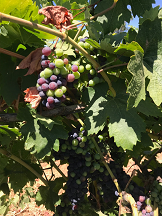 Zinderella going through verasion
Zinderella going through verasion
Our grower Paul has a quick update for us regarding the Zinderella grapes, “As you can see veraison has already happened, and now the berries are ripening and coloring nicely. This year’s 2018 wine grape crop is shaping up nicely for us! Overall fruit sets are slightly lighter than last year, but as we know, with lighter crop sets, it increase expectations of enhanced flavors and better total quality.”
Give us a call at 877-812-1137 or shoot us an email at sales@juicegrape.com to set up your order for the fall!
Zinderella – 88 Points in Wine Enthusiast!
Congratulations to our Lodi Growers on earning 88 Points in Wine Enthusiast for their Old Vine Zinfandel Wine – Zinderella.
“Zinderella, an Old Vine Zinfandel – Inspired by perseverance and invigorated by a willingness to never give up on a dream, Zinderella embodies so much more than just wine. From the heart of the esteemed Lodi Appellation, a land recognized as the Zinfandel Capitol of the World; only select Zinfandel grapes that have withstood the test of time have been chosen. With deep, rich Zin flavors, each bottle of Zinderella is an inspiration to follow our dreams and create memories. This is our Zinderella Story” – via Zinderella “The Perfect Fit”
Cheers to Lodi Wine & Lodi Grapes. Make sure to put your order in for Zinderella Old Vine Zinfandel Grapes for this Fall.






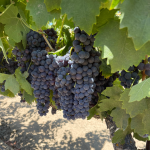
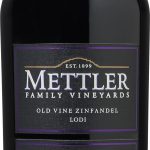
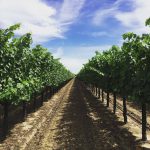
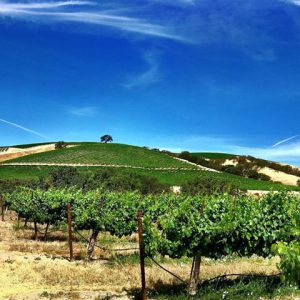
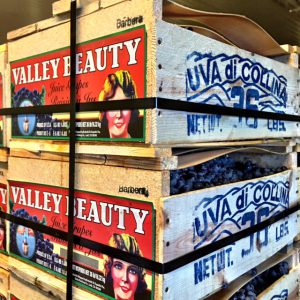
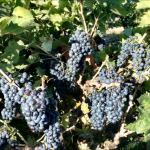
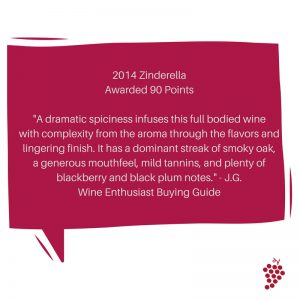
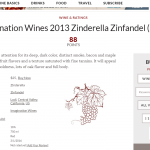
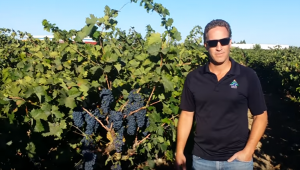
Recent Comments